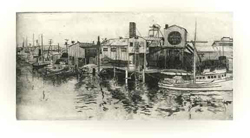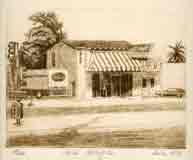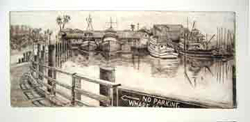
THE ART OF ETCHING
The art of etching flourished during the Renaissance when copper plates were used. Modern prints are now commonly made from zinc. I prefer the results and quality that can only be achieved with copper and “dutch mordant”, a special blend of acids.
Each plate is burnished free of scratches and covered with acid resist. The image is then drawn in reverse and the lines that are made through this protective coating will cut into the copper by action of the acid on the exposed metal. After the plate has been etched, it is ready to print. Improvements are made after the first proof is examined; the plate may be reworked many times before the edition is printed. The plate is inked by hand and the surface is carefully wiped clean, leaving ink in the grooves. Fine rag paper is dampened and placed over the plate on the etching press, then hand cranked under the roller. The paper, now having been embossed and inked, is delicately separated from the plate. This is repeated for every print and involves many hours of work to put together a limited edition of etchings. Each is then signed, dated and numbered, for example 16/100. The first figure is the number of the individual work, the second indicates the total number of similar etchings.
Although each picture is part of an edition printed from the same plate, each one differs minutely from the others, and has its own special characteristics.



plate size 5" x 12"
Black Ink on White Arches Paper
SOLD OUT)
plate size 5" x 12"
Sepia on buff Arches paper
Available in Black and Cream
plate size 5" x 12"
Sepia on Cream Arches paper


